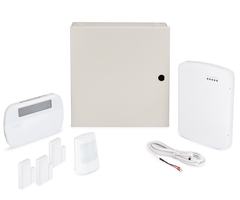Honeywell DT8050A
Dual Tec Motion Sensor w/ Anti-Mask
This product has been discontinued and is no longer in stock.
Description
The Honeywell DT8050A Dual Tec Motion Sensor is a great hardwired motion detector for virtually any home. This device offers an anti-masking feature to prevent others from obscuring the lens. As a a dual-tech sensor, both passive infrared (PIR) and microwave detection methods are provided.
In order for the DT8050A to activate, both the PIR and the microwave sensors must be triggered. The PIR sensor works by detecting the change in infrared energy that occurs when a person or object comes into the sensor's coverage area. The microwave sensor works by sending out microwave signals and recognizing how the signals return to the sensor as they bounce off of objects. By requiring both sensors to activate, the DT8050A works to prevent false alarms, while still responding when needed. A user can adjust the sensitivity of the PIR sensor by increasing or decreasing its pulse count. The signal range and strength of the microwave sensor can also be adjusted accordingly.
The maximum coverage area of the DT8050A is 53 feet by 72 feet, and this achieved by mounting the sensor from a recommended height. For best results, the sensor should be installed between 6'9" and 8'9" high, with the ideal height being 7'6". Another feature for the sensor is its integrated LED light that is used for testing and troubleshooting purposes. A zero-clearance bug guard is also included to prevent insects from tampering with the device. The fresnel lens provides uniform sensitivity optics to ensure that detection is consistent across the coverage area. The PIR sensor also uses dual slope temperature compensation so that it works properly in any ambient temperature.
Note: Honeywell offers the DT8050M, which is the same version as this sensor but with mirror optics.
Brand: Honeywell
Honeywell DT8050A Compatible Products






